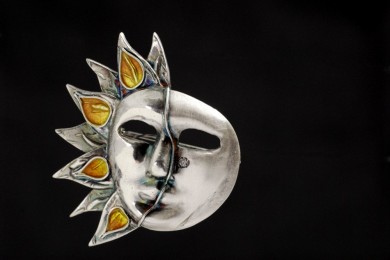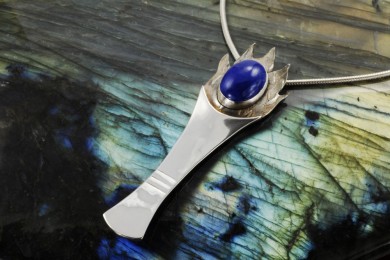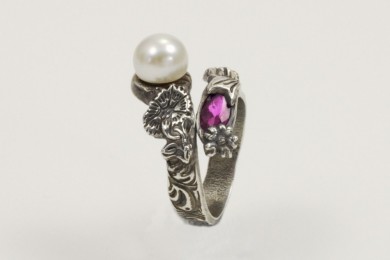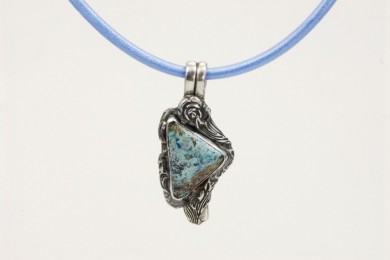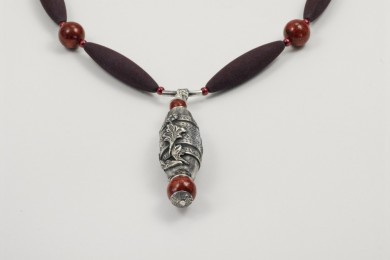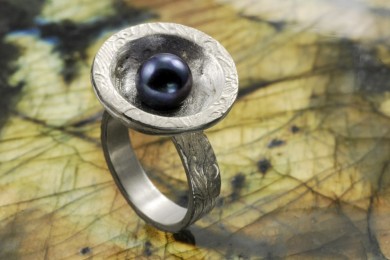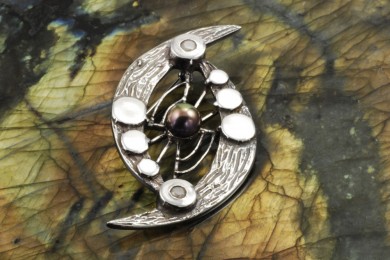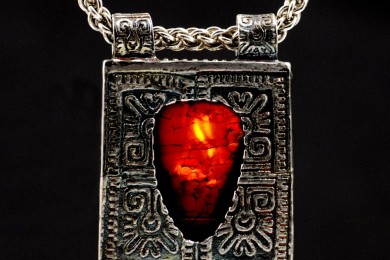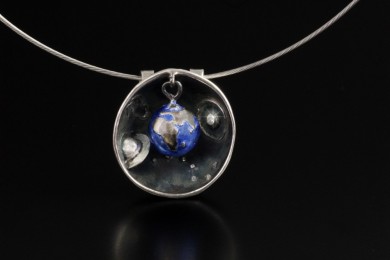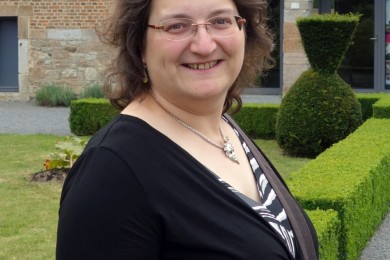Sandra, you were already making jewelry when you first discovered metal clay. What appealed to you about this new material?
What fascinates me about metal clay is the freedom of design it gives to me. With all the other techniques I used (like e.g. beading or wire work) there are limitations imposed by the technique. Wire will always be long and thin and a beaded piece will always consist of little beads strung together. Metal clay, on the other hand, is extremely versatile and can be used in innumerable ways to create pieces that would take a lot more work and a professional skill level when done in a traditional way.
Metal clay has thus helped me to find my personal style. You could even say it helped me develop my artistic voice.
Where do you draw your inspiration from?
My inspiration comes from many sources. There are, for example, historical designs like Celtic knots or architectural embellishments. Seeing things like the book of Kells or the Alhambra in Granada sets my brain spinning. Then there are natural forms and textures. Just walking through my garden gives me so much to look at and to think about. I find inspiration on a nanometric scale (crystalline or molecular structures) as well as at an astronomical scale (galaxies, nebulae, etc.) and everywhere in between.
You have received the "Made in Luxembourg" label from your government. How important was that in regards to your jewelry business?
Luxembourg is a small country and the majority of goods sold here come from abroad. So the label “Made in Luxembourg” sets me apart from many of my competitors. Luxembourgish clients are usually pleasantly surprised to find out that I hand make all my jewellery here in Luxembourg. For me this is a definite advantage in the Luxembourgish jewellery market. The label “Made in Luxembourg” visualizes this advantage for my clients.
How important is learning new techniques for you and participating in courses and seminars to continue to develop your skills?
I love taking classes and learning new skills. It is like opening a door to a new part of a house and discovering what lies hidden there.
Learning new skills, however, is much more than just taking a class and learning the technique. It includes also playing with the new technique and making it my own. I would even say, that this is the most important part of it. When I take a class, I learn the new technique the way the teacher uses it. My first pieces will essentially show his or her style. Then I need time to become proficient in the new technique in order to use it as a tool to express my artistic voice rather than as an end in itself.


